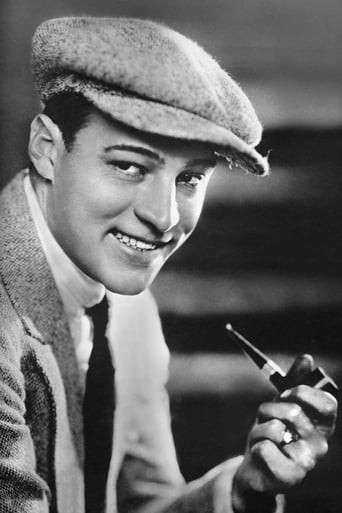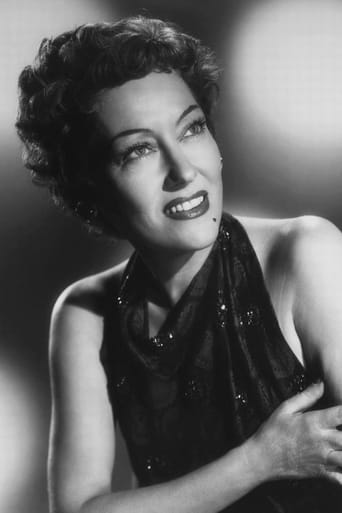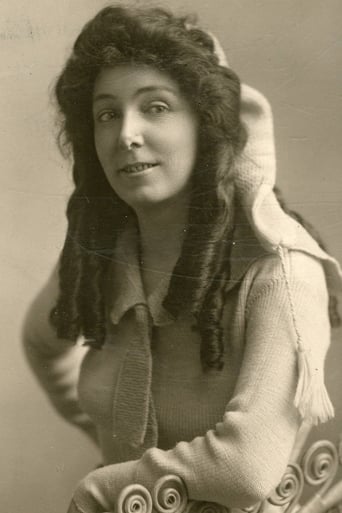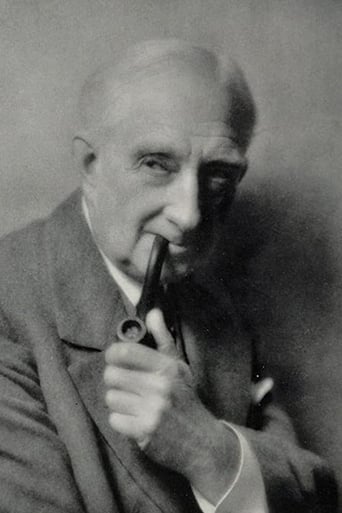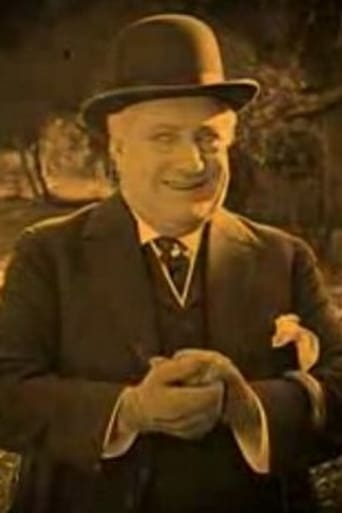Pluskylang
Great Film overall
Acensbart
Excellent but underrated film
Humaira Grant
It’s not bad or unwatchable but despite the amplitude of the spectacle, the end result is underwhelming.
Allison Davies
The film never slows down or bores, plunging from one harrowing sequence to the next.
MarieGabrielle
Gloria Swanson looks lovely and young here as Theodora, an ingénue with no money who marries businessman Josiah Brown so she may help her dear father. For the era, the film is remarkably effective, the rice throwing scene as she departs, to go to Europe with her new husband. Even while black and white and digitally restored yet bruised film, the visuals are quite interesting.Rudolph Valentino as Lord Bracondale is quite attractive. It is subtle, he meets her through the Tyrolean honeymoon, the smell of narcissus on her handkerchief reminds him of.....something....Of course all is above board and nothing happens for quite some that is untoward.What is lovely about this film is the visual sense of eroticism and romance. We do not see this today. It is subtle, no screaming, psycho-drama or histrionics. It is, in a sense the way some real romance and infidelity may be played out. Theodora loves Lord Bracondale but remains faithful to elderly and infirm duffer Josiah Brown.Eventually we see Josiah financing a safari to Algeria as he chooses to do so to rid his wife of the stigma of being married to an older, less virile man. He acquires a small legion of Algerian soldiers on an archaeological mission, but there is danger and Theodora decides to follow him.There are some innovative scenes of the Algerian desert and an archaeological site which several explorers note was a "torture site for an unfaithful woman, as from the Bible". It is stark and desolate desert, evoking barren emotions, barren marriage.I found this film charming and visual. Romantic comedies today are saccharine and trite. While some of the cinematography is rudimentary it far surpasses what passes for romantic interlude today.Please watch and Gloria Swanson looks lovely. 8/10.
jerryuppington
(Contains possible spoilers)I just loved this movie. Part of the excitement is watching a resurrected film, lost after over 80 years. It's like finding buried treasure.This movie, however, would interest almost everybody, except experts who're jaded by years of cinematic criticism. Some points:1. Swanson and Valentino are both beautiful to look at; Valentino is miscast, however. Swanson ages in concert with the screenplay, while Valentino doesn't; he photographs too young next to Swanson, especially in the later parts of the movie.2. The costumes will make you wonder. Some are ridiculously elaborate. This is high regalia 20s-style. I wonder if they'd even be possible to make today? This is the best movie I've ever seen for parading 20s fashion.3. Performances are subtle, nuanced, and believable throughout.4. All the various stages of nitrate composition are evident here--first, the blurring, then the "freckles", then the "moldy cheese" look, then, finally, the disappearance of the image. On the other hand, some of the scenes are so crystal clear that you can see the details on the costumes. If you want to learn about nitrate decomposition, this film is a good teacher.5. Swanson's tango dance, and the dress that was" talked about for a year", did not survive nitrate decomposition. Contrary to many reviewers' opinions, stills exist for the tango dance. The dress in question is probably the one she wears on stage, for less than a minute, during the pageant sequence. Unfortunately, because it's a long shot, we don't get to see it in any great detail.6. The modern soundtrack is often off-putting, but during the second decomposing sequence (during the pageant), the somber, dramatic, heart-beating tune matches the action on the screen, while at the same time, dramatically draws attention to the decomposition itself. Was this purposeful? It's as if the composer was saying,"Listen, you fools! These films are disappearing. Just watch this sequence and see for yourself!"7. While the plot is ridiculous today, it was the norm in 20s society. Elinor Glyn sold millions of books. What entertainment do we have today, that will be laughed at 80 years from now? (Rap music is a possibility.) It's too easy to look at films like this through the lens of today's sensibilities, and lose perspective.8. About four minutes of film is missing; it's easy to pick out where, because the plot continuity reveals it.9. Close attention to the sets will reveal that the same room, redecorated several ways, is used several times. For example, Valentino's library, and Swanson's husband's library, in the scenes after the pageant where the letters have been switched, is the same room redecorated.For all these reasons, see the movie. If you're not enthralled by something in the film, you're jaded. All the rest of us little folks will love it--it's just plain fun.
mgconlan-1
It's great to have this film back after 84 years! It's only a pity it couldn't have been rediscovered while Gloria Swanson was still alive (in her autobiography she named it as one of the three films of hers the "loss" of which she regretted most, along with "Madame Sans-Gêne" and the last reel of "Sadie Thompson"). Elinor Glyn's story is horribly contrived — I can't think of another movie until the Beatles' "Help!" that moved its characters so extensively around the world to so little effect — and the love scenes are a bit disappointing (Swanson recalled that the Fatty Arbuckle and William Desmond Taylor scandals both broke just before this film started shooting, with the result that the script was given a last-minute rewrite to tone down the adulterous passions of her and Valentino's characters) — but what makes this movie truly great is the marvelously understated acting. This is the film to show someone who thinks all silent-film actors swooned, waved their arms like windmills and reacted to traumas like the Statue of Liberty collapsing in an earthquake: the people in "Beyond the Rocks" use simple, economical gestures and facial expressions to get their emotions across. I credit director Sam Wood — who made the transition to sound quite successfully and had a long career in the talkies — with getting these marvelously realistic performances from his cast. Henny Vrienten's musical score for the restored print is somber and effective, though I could have done without the sound effects and crowd noises and it seems odd to watch a silent film with music whose primary instruments are a flute and a Miles Davis-style trumpet.
drednm
Finally saw this via TCM's world premiere; this is the most famous film discovery of the last few years, thought to be lost for 80 years! Very good romance film that sweeps from the English coast to the Alps and the to the African desert. Gloria Swanson and Rudolph Valentino star as star-crossed lovers who wait years to get together.They meet when she falls from a row boat into the sea and he dives from his yacht to save her. They area attracted but she must marry a self-made millionaire to save her poor family. Later in the Alps on her honeymoon she slips from a snowy ledge and is rescued to guess who? They continue to tun into each other (because he's chasing her) until finally they all come together in the desert.A little slow but Swanson and Valentino are two of the most charismatic stars of the 20s and they are great together.Oh I didn't care much for the new musical score. It was boring New Age droning and didn't fit the era. Milestone made the same error with it's restoration of Piccadilly. Here the music drones along, except for a Scott Joplin number, with shards of sound effects.Based on a novel by Elinor Glyn, the topic of "love outside marriage" was a hot one in the early 1920s. Glyn's plots are always clichés but the real magic here is the beautiful Swanson and beautiful Valentino and how they finally get to be "beyond the rocks." Parts of the film are missing but nothing major. Some parts are distressingly deteriorated but nothing to ruin the overall film. Other parts of the film are so clear you can see grain of the fabrics.Read up on this film in Swanson's autobiography. She was friends (only) with Valentino and allowed him to be co-starred with her (she got first billing despite the new Dutch restoration that gave Valentino top billing in the closing credits) on condition she get a 3-month vacation in Europe.Later she corrected someone who said SHE had worked with HIM. HE had worked with HER (because it was her film). Wow semantics, but in the original Swanson got billing alone above the title.Swanson also talks about the famous tango she did with him--alas lost! I assume it was during the house party where they were readying a "pageant" and she's wearing a famous dress (they talked about it for a year, says Swanson) of white lace and shimmering gold beads. The lobby card I have from this film is a scene of Valentino and Swanson doing the tango. What a pity, but maybe the scene will be found.At the very end of her terrific book she says people never stopped asking her if she knew where a copy of BEYOND THE ROCKS was... or MADAME SANS-GENE or the final reel from SADIE THOMPSON. You can sense her great feeling of loss.But it's ironic that in several of her "recovered" films there are still scenes missing: the tango scene in BEYOND THE ROCKS, her Chaplin impersonation in MANHANDLED, and the final piece of SADIE THOMPSON.
